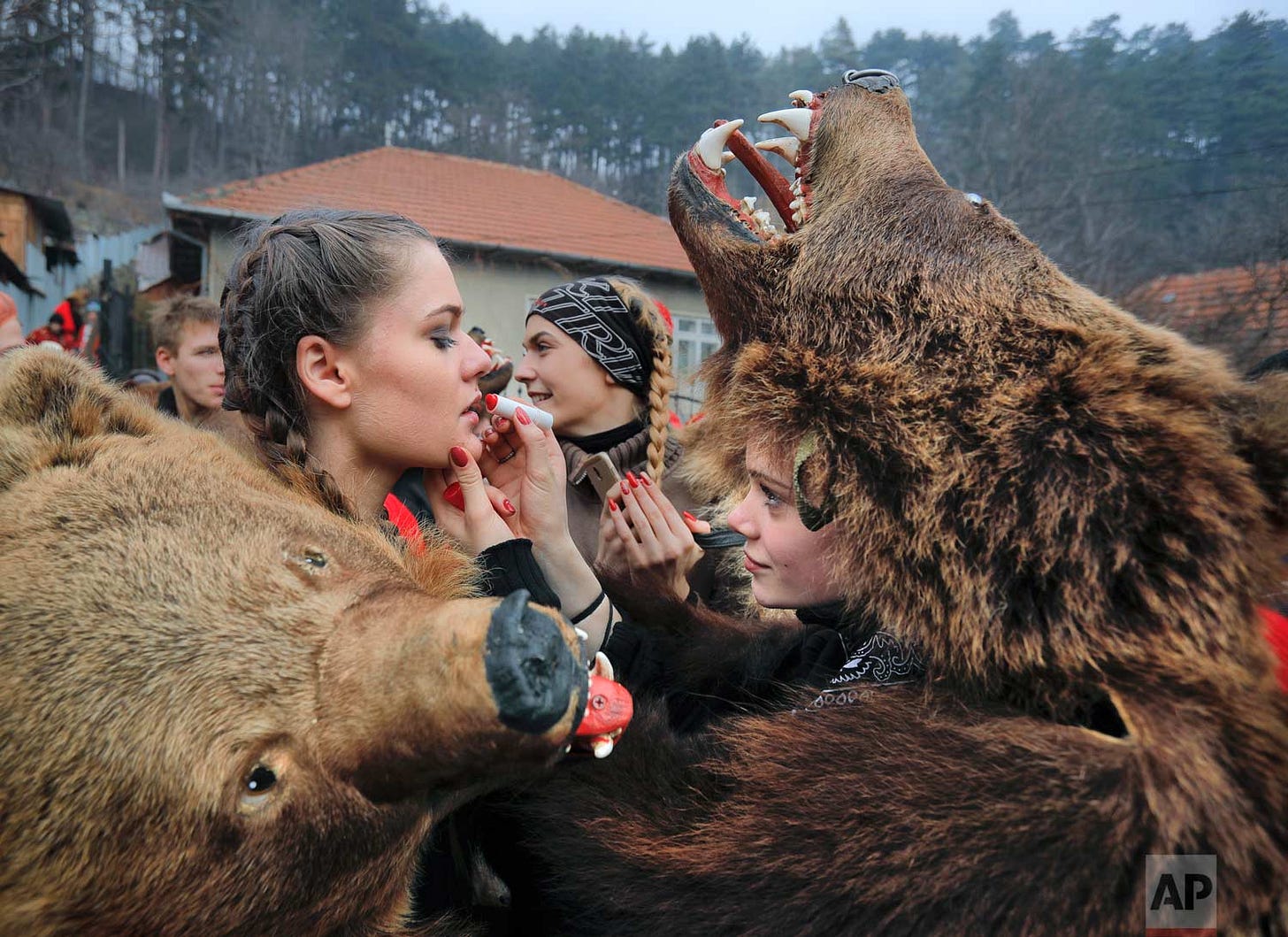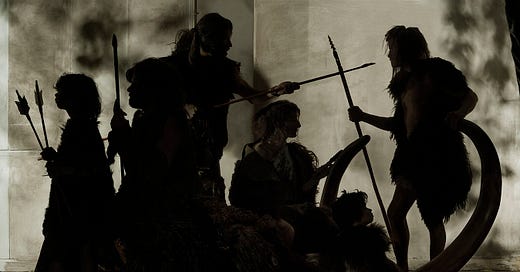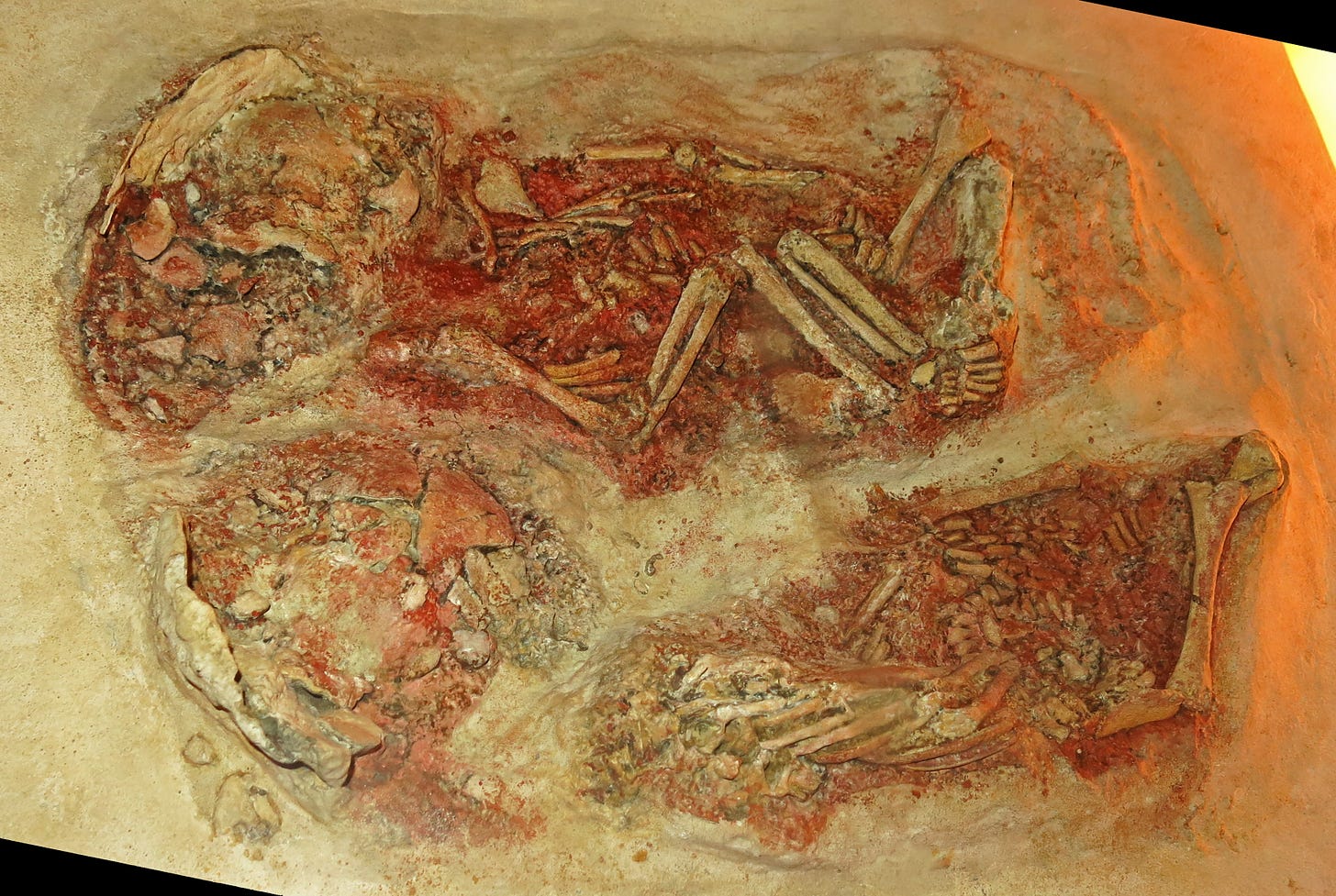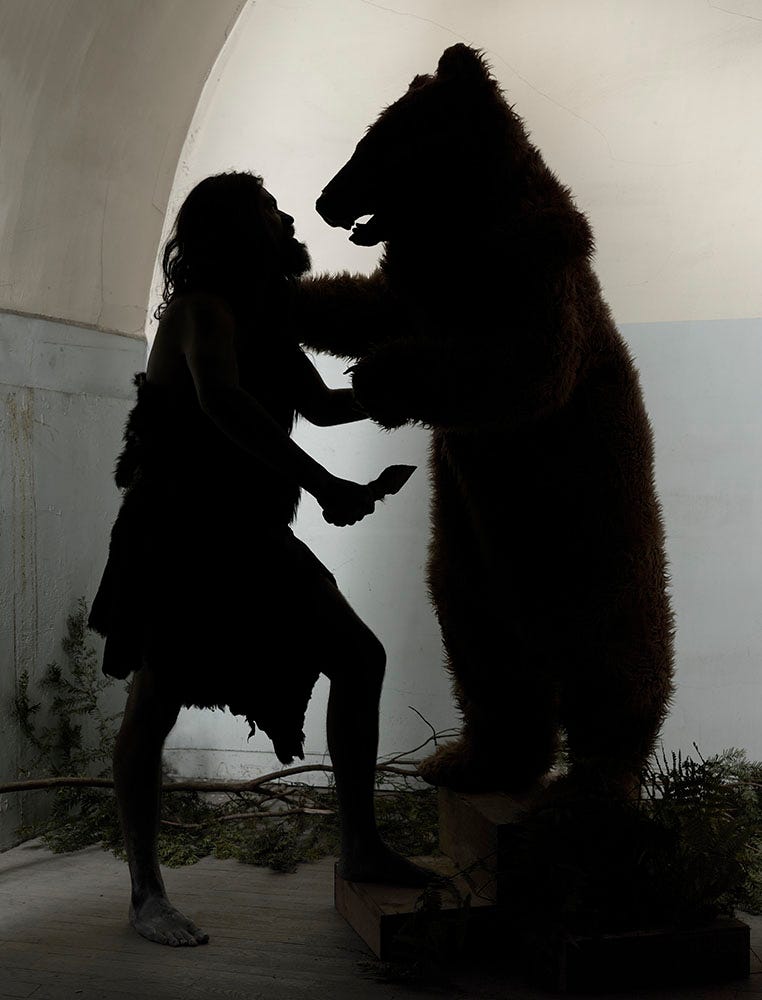What Was Neanderthal Religion?
The foundations of religious thought are encoded in our myths and traditions. We can trace them back to the caves of the Paleolithic.
“The richness and complexity of the religious ideology of hunting peoples must never be underestimated.” –Mercia Eliade
The origins of religion do not lie solely in the temples of Sumer or the scrolls of Sinai. They whisper to us from deeper shadows, from the caves of Europe where the Neanderthals first observed the cycles of death and rebirth in themselves and nature. Their legacy may hold the key to understanding the earliest stirrings of human spirituality—not as abstract beliefs, but as practical, lived systems that intertwined survival with the sacred.
The Cave as Sacred Space
For Neanderthals, the cave was more than a shelter; it was a liminal space that bridged the material and the spiritual. Its dark, hidden recesses symbolized the underworld, a realm of transformation where life and death converged. The cave’s opening, by contrast, represented a threshold—a portal between the earth and the mysteries below. This symbolic function laid the groundwork for later human constructions, such as dolmens and temples, which echoed the cave’s dual nature as both womb and tomb.
Within these natural sanctuaries, bears retreated with the death of the foliage to hibernate, only to re-emerge in spring with their new cubs. This cyclical imagery may have been seen as a resurrection, a testament to the cave’s role as a vessel for rebirth. The bear’s journey into and out of the earth mirrored the broader rhythms of nature, reinforcing the cave’s sacred status as a site where life renewed itself.
Later cultures inherited this symbolism, crafting dolmens, barrows, and temples to recreate the quiet sanctity of the cave. These structures, like their natural predecessors, served as thresholds between worlds, places where humans could commune with the divine and seek meaning in the cycles of existence. For the Neanderthals, the cave was not just a physical space but a spiritual concept, grounding their understanding of life, death, and rebirth within the earth’s enduring rhythms.
The Bear as Sacred Icon
The Neanderthal "Bear Cult" was first suggested by Emil Bächler after his excavations at Drachenloch in Switzerland, as well as Wildenmannisloch and Wildkirchli Caves, where he reported arrangements of bear bones “belong[ing] entirely within the framework of primitive hunting and sacrificial cults, as we’ve seen in prehistoric periods and among today’s primitive hunters.”1 At Le Regourdou in France, a Neanderthal burial site contained the remains of a bear laid to rest alongside a human. Was this coincidence, or an early echo of later bear cults among northern peoples?
In the Stone Age, bears were not only respected as fierce competitors, but their annual hibernation and reemergence mirrored the renewal of life after the dormancy of winter, making them possibly the first venerated religious symbol for the bridge between the worlds of life and death.

Later traditions of bear veneration—from the Ainu of Japan to the Saami of Scandinavia—or the shared names of the Great and Little Bear constellations across cultures—may not merely parallel these ancient practices but inherit them.
Most importantly, that foundational religious impulse—rebirth—of the sun, the ancestor, or the Christ—is represented perfectly by this unique beast that emerged literally and symbolically from the cave opening, bearing new life every spring.
Bone and Burial
Neanderthals were not casual in their treatment of the dead. Burial sites reveal care and intention—the positioning of bodies, the use of red ochre as a blood symbol, and the placement of grave goods. At Shanidar Cave in Iraq, Ralph Solecki’s groundbreaking work uncovered what might be the earliest floral tribute: pollen grains suggesting flowers placed around a buried body.
These practices suggest an understanding of the sacred. Death is not the end; it is a threshold, and the Neanderthals marked it with gestures that resonate with later human rituals. The act of burial itself—especially in the fetal position or in alignment with the East-to-West course of the sun—implies "an intention to connect the fate of the soul with the sun, hence the hope of a rebirth."2
Just as the natural world transformed through cycles, so too might the soul or essence of the deceased. This understanding laid the groundwork for later human traditions, where death and renewal were intricately linked.
Initiation and Transformation
Life in the Pleistocene was brutal, but it was also rich with meaning. Coming of age likely involved trials that tested the body and spirit. The caves—dark, mysterious, and often adorned with art—may have served as liminal spaces where initiations occurred. Crawling through narrow passages, emerging into painted chambers, a young Neanderthal might have encountered symbols that spoke to their role within the tribe and the cosmos.
These rites likely cast the initiate as a reborn ancestor, uniting past and future within the cyclical rhythm of life. To become an adult was not merely to survive; it was to embody the continuity of the tribe, to carry forward the wisdom of those who came before. Initiation is both practical and spiritual—a way to transmit knowledge, forge bonds, and ensure survival across generations.
Considering the significance of the bear as a symbol and the more primal tangibility of spiritual rites in the Stone Age, it’s possible that initiation involved the bear and the cave, or that the concept of initiation itself is a recreation of the separation of the cub from the bear mother. It is likely that many monstrous mythological archetypes, like the ogre, the witch, and the giant, are versions of the bear (note their near-sightedness, slow-moving nature, sleepiness, and taste for children). Perhaps they were foes to overcome during initiation.3 Certainly the image of a successful initiate emerging from the cave suggests a completed rebirth.
Why Does it Matter?
Beyond the argument that Neanderthals buried their dead, there’s been little speculation as to why particular symbols were repeatedly included in the process outside of the “Bear Cult” theory, and it’s often dismissed as unimportant or the result of natural phenomena. From our perspective, knowing the cognitive capacity of Neanderthals and their place in our lineage, these elements should instead be mined for insights into their sensibilities and compared with the cultures that followed in their footsteps.
Because Neanderthals remain hampered by their reputation and the lack of a physical record relative to subsequent cultures, any suggestions of a Neanderthal culture assumed that it would either be too simplistic to garner popular interest or wouldn’t be recognizable to modern people. The image of cavemen venerating bears and skulls seems foreign on its surface and would fail to inspire imagination or deep empathy. This is why the evidence has not been given the privilege of deep comparative analysis with later cultural traditions.
Neanderthals were not merely a footnote in our evolutionary story. To a large extent, they are us, and their contributions to the great drama of human consciousness are embedded in our daily and annual traditions. Their religion—if we dare to call it that—was not codified but lived, expressed in cycles and symbols, bones, burial, and song. It shaped the northern cultures that followed, leaving a legacy that lingers in our myths, dreams, customs, and religions.
To understand Neanderthal spirituality is to glimpse the dawn of our own. In their rituals, we find the roots of the sacred—a reminder that before temples and texts, humanity sought meaning in the deep places of the earth, guided by the rhythms of life itself.
Bächler, Emil Das Drachenloch ob Vättis im Taminatale (1921) pg. 108-9 (trans. Author)
Eliade, Mercia The History of Religious Ideas vol. 1 pg. 11
See The Secret of the She-Bear by Marie Cachet, 2017







very interesting! i’ve also heard of recent speculations about the significance of birds and feathers for neanderthals since they’ve been found at various burial sites
Great read. It's really good to see how our understanding of Neanderthals is changing and improving to the point that calling someone a Neanderthal is actually unfair to Neanderthals. They were complex human beings, able to produce abstract art, music and complex ideas.